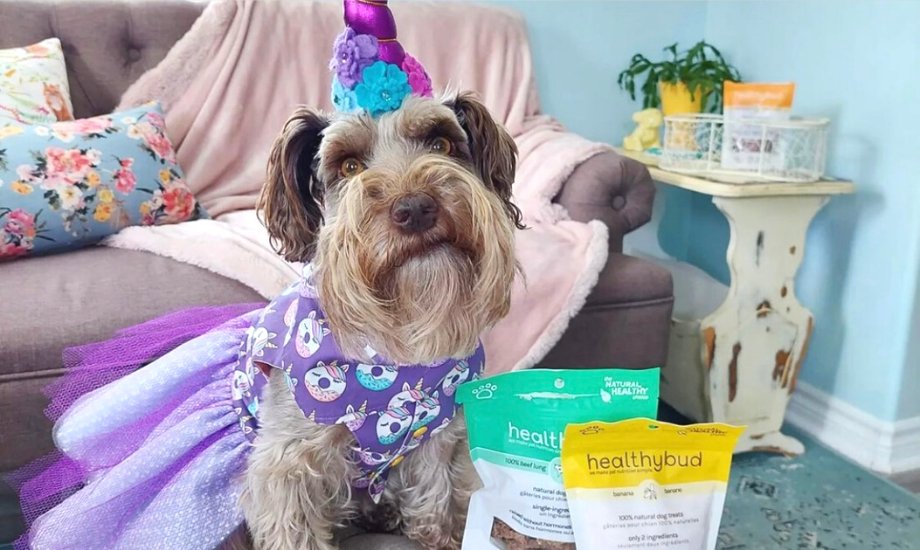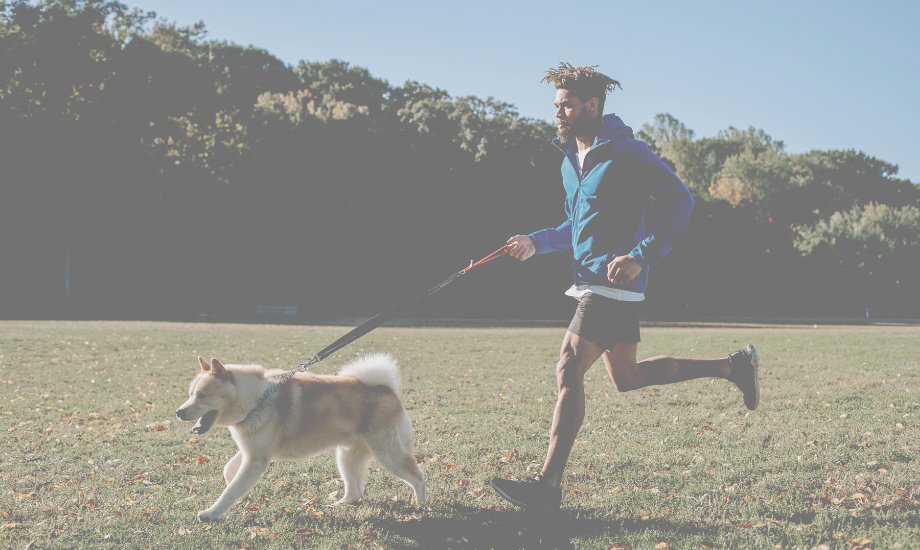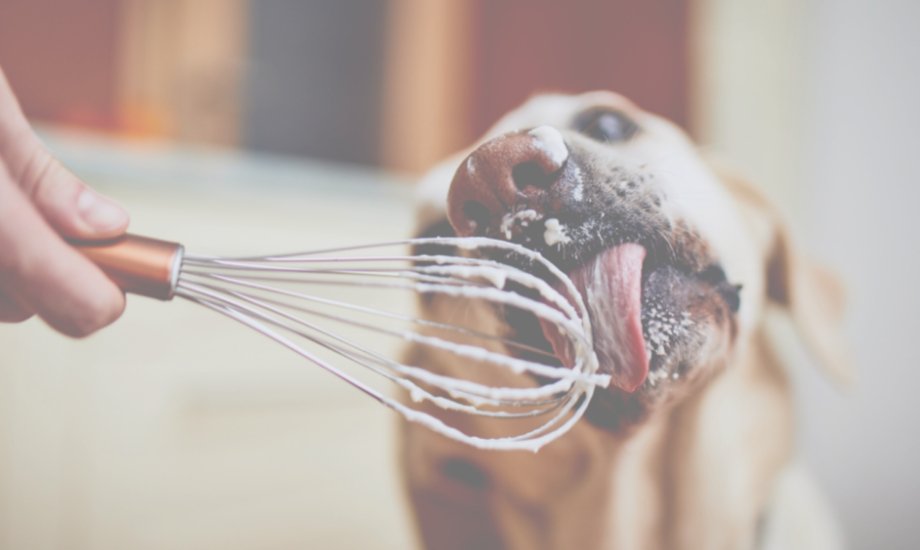top 5s
The top 5 treats to train your pup with
We all know treats make pups happy, especially when they do something great. There's more to treat selection than simply picking your pup's flavour of the day. We're diving paws-first into the world of training treats — where factors like behaviour, frequency, and even contrast come into play.
Apprendre encore plusHow to Get More Active This Spring
Did you know that April is Active Dog Month? This is a great way to shake off the more sedentary lifestyle that we can get sucked into over the longggg winter months, and get outside to enjoy the warmer spring weather! This year (more than ever) with many people going back to the office (did you see last week’s blog?) it’s a great chance to get back into a more active lifestyle to keep your dog happy and healthy! Here’s our top five tips for how to get back to being active with your pup!
Apprendre encore plusOur Five Fave Lickimat Recipes
Enrichment activities are so important to have a happy, healthy dog so we want to give you some quick and easy ways to keep your dog stimulated, starting with a lickimat! Here are some recipes that you can use in a lickimat to keep your pup occupied and avoid boredom! You can find lickimats at many pet stores, and of course online.
Apprendre encore plusHow to Keep Your Dog Safe This Spring
March 20th is officially the first day of spring! Although the changing seasons can mean so many great things (more time outside, longer days, warmer temperatures, and new life sprouting up), it can also pose some hazards for your pup! Keep reading to find out what to watch out for as the temp starts to rise…
Apprendre encore plusTop 5 Tips for Caring for a Senior Dog
As you may have seen in our last few blog posts, November is Pet Cancer Awareness month. But did you know that November is also “Adopt a Senior Pet” month? Whether you are considering opening your home to an older dog in need, or if your dog is reaching their golden years, here are our top 5 tips for how to keep your senior pup healthy!
Apprendre encore plusTop 5 Tips For Healthy Teeth
Oral and dental health are vital for your bud's health & wellness.🌱A proactive approach can keep your pup thriving throughout their lifetime so here are some tips to keep your dog's teeth healthy: 🐶 FEED RAW MEATY BONES The act of pulling bits of meat, gristle, and cartilage off the bone, along with the scraping of their teeth against the bone helps with cleaning plaque! FEED A NUTRIENT-RICH DIET Here are some great minerals to keep in mind: • ANTIOXODANTS are great anti-inflammatories - a proper balance between free radicals and antioxidants is crucial for healthy periodontal tissues. ✅ • ZINC is especially important for strong gums, and it can inhibit plaque. 🚫 • Vitamins C, Omega 3 & Fatty acids (found in fish oils, for example) can also help manage periodontal inflammation. 🔥 • CALCIUM: if your dogs don't get enough, they will absorb it from their own bones. This weakens the area where the teeth attach in the jaw. 🦴 BRUSHING TEETH While nutritional support is important, you also have to do a little maintenance.✔️ The best approach to plaque removal is with regular tooth brushing at home. 🏠 TOOTH WIPES If your pup gives you trouble when trying to brush their teeth, try using tooth wipes! These cloths are made to be rubbed against teeth to help remove plaque (but keep in mind they can't reach the tiny nooks like tooth brushes can!) PROFESSIONAL CLEANINGS🥼 Although this is more expensive than the other tips we’ve mentioned, a professional dental cleaning is the best way to ensure your dog’s dental hygiene is on track. 📈 Your vet is experienced in preventing, locating, and treating any issues that can go unnoticed.
Apprendre encore plusThe Power Of Pups On Our Mental Health
Mental health awareness week is October 3-9th. As we wrap up this week of reflection on mental health, we wanted to look at 5 ways dogs help our mental wellbeing! 1. Provide Us With A Routine Dogs tend to do best with a routine, which can also help out us humans. Especially if you struggle with mental illness such as anxiety disorders, having a consistent routine can give you a sense of dependable consistency. Caring for a dog can also provide you with a sense of control. Sufferers of mental illness often feel a lack of control, so having a dog to provide consistency and a sense of empowerment can be so important! 2. Give Us A Sense Of Purpose If you are struggling with a mental illness such as depression or severe anxiety, it can be difficult to get out of bed and manage the day-to-day tasks when you are feeling overwhelmed. Having a pup that relies on you every day for food, water, bathroom breaks, exercise, and play can give you the needed push to get out of bed. Caring for your four-legged family can also remind you to practice your own self-care. Grooming your dog can remind you to keep up with your own appearance, and brushing their teeth may remind you to do the same for yours. 3. Increases Our Feel-Good Hormones There have been multiple studies that show an increase in the hormones responsible for making us feel good - serotonin, dopamine, prolactin, and oxytocin (which combats cortisol, the stress hormone). Interacting with dogs in general have been known to increase levels of serotonin and dopamine, but these levels are even higher when spending time with your own pet. The repetitive nature of petting a dog can also have a calming effect on us. Have you noticed that when you’re feeling particularly stressed or anxious, your pup seems to just know? Dogs are very attuned with our emotions, and seem to always know when they are most needed to come over for an extra cuddle. 4. Non-Judgemental Love You know the way your dog looks at you when you get home after work - that look of unfiltered love? Your dog won’t judge you if you’ve sat at home and cried, or if you tell them your deepest darkest secrets. That unconditional love can do wonders for your head and heart! 5. Encourage Us To Get Outside And Active Being a dog owner requires a certain level of physical activity. Our pups need to get outside for bathroom breaks and for daily exercise. Not only does this keep us active as well, it can be a great chance to get out in nature, which many people find a great way to feel more centered. Another added benefit is that getting out and about with your dog can lead you to find and explore new places, and to meet new people. What better way to celebrate the end of mental health awareness week than to thank your dog for all the ways they help support your mental wellbeing? You can give them an extra special treat, spend the day doing their favourite activity, or even find a new enrichment activity to keep your pup’s brain busy! Stay healthy, stay happy, stay curious #healthygang! Lots of love, The healthybud team
Apprendre encore plusTop 5 Spring Activities With Your Dog
Tomorrow is officially the first day of spring! It’s also right around the one year mark of when COVID lockdowns started in 2020. After one full year of being stuck at home, you may be looking for some new things to try outside with your pup as the weather gets warmer. Check out our top five activities to try this spring! Go For A Hike Especially if you live in a major city, it can be a much needed change of scenery. Not only do you get to check out a new area, hikes can offer some variation in terrain. Walking up and down trails helps tire your dog out even more than walking on flat ground. Make sure that you find a trail that is suited to both your and your pup’s fitness levels and bring water for you both. Work On Your Fetch Skills Fetch is a great game to play if your dog has some extra energy to burn. You can play fetch with a rope toy, a frisbee, or check out the healthybud tennis balls! This is not your ordinary tennis ball but features a pet-safe poly felt exterior that won’t wear down your pup’s teeth like a normal tennis ball, and an inner core made of natural rubber. Focus On Enrichment Although having a structured walk with purpose can be great training for our pets, or when we are on a time crunch, our furbabies need to experience the enrichment of sniffing! Often referred to as a decompression walk, this is a time specifically designed for you and your pup to unwind. It is important to find an area that is quiet where your dog can experience nature by running, jumping and sniffing. If your dog has a reliable recall and there is an appropriate place to do so, they can be off leash, or you can use a long line on a harness with a back clip. The main point is to allow your dog freedom of movement. Go For A Swim If your dog is an avid swimmer and you can access a lake or river, this is a great activity! If your pup isn’t a swimmer, you can get a life jacket for them, or stick to a location with shallow water. Create A DIY-Agility Course Indoors or outdoors, set up items for your dog to crawl through or under using old cardboard boxes, or other household items. You can also set up small jumps for your pup using something as simple as a broom across some boxes. Just make sure you are going at your dog’s pace, and keeping their safety in mind. If you don’t have a space of your own to use, you can take your agility on the go. While on a walk, find different places to get your dog to jump up (on a raised curb, a downed tree, etc).
Apprendre encore plusTop 5 Most Toxic Foods For Dogs
Have you trained your dog on the “leave it” command? If not, now may be a great time to start! It’s a really important command since some common foods found in our homes can be quite toxic to our pups! Here are 5 toxic foods that you may not know to watch out for. Caffeine We all know that chocolate isn’t good for our four-legged family, but do you know why? Dairy products can sometimes cause gastrointestinal upset in our dogs, but caffeine is another big trigger! This is also why the darker the chocolate, the more significant the risk, which varies based on the amount consumed and the size of your pet as well. Chocolate can also sometimes contain xylitol (also found in some peanut butters, children’s medicines, and gum) which is a toxic sugar-free sweetener.Other sources of caffeine, such as coffee beans/grounds, sodas and energy drinks can be dangerous, too. Watch for signs such as hyperactivity, GI upset, elevated heart rate / blood pressure / body temperature, seizures, or collapsing. Alcohol Continuing on with beverages that can be harmful to our pups, alcohol is also poisonous. This is not something that is commonly knowingly given to pets, but dogs who counter-surf may sneak some from a glass, or if a drink is spilled they will often “help’ clean it up. Alcohol can cause lethargy, incoordination, drooling, weakness, vomiting, collapse, and a decrease in respiratory rate / blood sugar / blood pressure / body temperature. Hops, used in brewing beer, can be highly toxic for animalsAs home brewing becomes more popular, this is an increasing risk and can be fatal if left untreated. COVID-19 and lockdowns have presented another alcohol risk to our buds - bread making! Raw bread dough can contain ethanol (alcohol), so make sure to keep your dog away from your latest COVID baking project. Grapes And Raisins This group actually includes grapes, raisins, sultanas, some currants, and any other grape-based product like trail mix with raisins, grape juice, etc. Grapes can cause acute kidney failure in our dogs, and perhaps most concerning of all: this toxicity does not seem to be dose-dependent. There is still no concrete answer on what causes this toxicity but contact your vet right away if you notice your pup has gotten into one of these foods. Possible symptoms of grape toxicity include vomiting, diarrhea, food refusal, and kidney failure. Garlic And Onion This whole family of foods is toxic to pets and includes garlic, onion, chives, and leeks. Out of these, garlic poses the greatest risk at about five times the toxicity than leeks and onion. Certain breeds seem to be more prone to garlic toxicity than others. Along with GI upset, garlic and onion can cause damage to the red blood cells, which can cause secondary anemia. Symptoms of anemia include pale gums, lethargy, increased heart / respiratory rates, collapsing, weakness, and exercise intolerance. It is important to note that symptoms of garlic toxicity may not be evident until a few days after ingestion. Avocados, And Fruit Pits Small amounts of avocado are usually safe for our pets as dogs and cats are not overly sensitive to persin, the toxin contained in avocados. Too much avocado can cause pancreatitis (inflammation of the pancreas) due to the high fat content of this food. Perhaps the biggest risk is actually the avocado seed (commonly referred to as a pit) as this poses a choking risk. Other fruits such as apricots and apples contain cyanide in their seeds, and although it would require ingestion of a large amount of these seeds, it is safest to avoid the risk. Pits and large seeds can definitely pose a large choking hazard as well. Bonus Fat Trimmings And Small Bones Although these are not poisonous to our dogs, they can present some real health risks. Very fatty foods can lead to pancreatitis, a painful condition for your dog to suffer through that often brings with it expensive veterinary bills. Bones, particularly when small and cooked, can lead to choking or splinter and cause a perforation risk. If you suspect your dog has ingested any of these toxic foods, it is always best to call your veterinarian immediately. If you want to learn more about common poisons, check out https://www.petpoisonhelpline.com/ and keep checking back on The Bud Blog for the month of March as we look at other poison prevention tips for your pup!
Apprendre encore plus










